It’s scary to think of any fire happening in your home under your watch. Chimney fires are especially dangerous because they can happen without you even knowing but they are very preventable! It’s as easy as getting your chimney and fireplace inspected and cleaned yearly by the CSIA-certified technicians at Clean Sweep of Anne Arundel County. With that in mind, let’s explore the causes and effects of having a chimney fire in your home, as well as what to do if it happens to you.

Causes:
Chimney fires can happen to anyone, regardless of if you have a masonry or a prefabricated chimney. Buildup, called creosote, collects on the inner lining of the chimney as it’s released by wood, cardboard, or whatever else you may be burning. It is sticky due to the condensation that is also released, and becomes tar-like. It is highly flammable, and is the main cause of chimney fires.This is why the Chimney Safety Institute of America (CSIA) recommends annual chimney sweeping and inspections.
Effects:
The unique situation with chimney fires is that they can produce a variety of reactions depending on the creosote buildup and the type of chimney. Since most chimney fires are often contained within the chimney, you may not even know a chimney fire is happening or has occurred. When a chimney fire is noticeable, it might sound like a train, with a slow rolling rumble. It could also pop and crackle with shooting flames, noticeable smell, and large volume of dense smoke. Other times, the fire is slow-burning and does not have enough fuel to be visible and dramatic, but can still damage the chimney structure. A chimney fire leaves signs of its presence such as creosote buildup that has puffed up or flaked off, warped metal chimney components, discolored chimney cap, missing or cracked flue tiles, as well as roofing material that have been damaged as a result of the fire are all proof that a fire occurred.
If you experience a chimney fire and it is safe to do so, close the damper and any doors on the fireplace completely to choke out the fire. Dial 911 immediately and get you, your family, and your pets out of the home safely. While fire emergency services are on their way, use a garden hose to spray the roof and chimney outside to protect the roof from catching fire. Before using your chimney again, have a CSIA-certified technician perform a chimney inspection to sweep and evaluate the condition of your chimney and, if need be, make recommendations about bringing your chimney into compliance with safety and performance standards.
How do I prevent another one from happening?
Using the right kind of wood is very important. Use proper kindling, newspaper, and only use dry, well-seasoned wood. Have your chimney swept and inspected on a yearly basis.
We don’t want you to hesitate with any questions you may have. Call Clean Sweep of Anne Arundel County for details on what to do after a chimney fire. And of course, if you haven’t already scheduled your yearly inspection and cleaning, now is the time!
The post Chimney Fires: What to Do appeared first on Clean Sweep of Anne Arundel County.




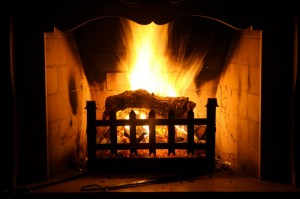
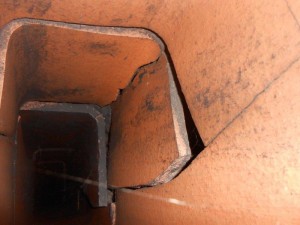 Your chimney’s liner serves as a
Your chimney’s liner serves as a 



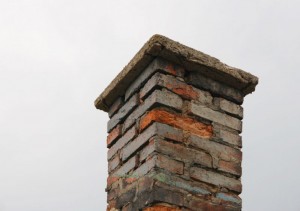
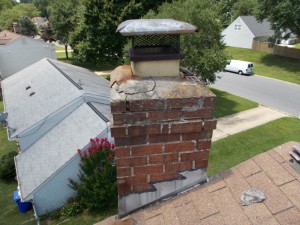
 Between the heat of your fires, the moisture of winter’s rain, sleet and snow, and extreme freezing temperatures, your chimney undergoes a lot of stress. It’s important to examine your chimney for your wood burning appliance as well your oil or gas furnace system now so you can spot any problems and have them addressed before next fall. We’ve created a spring chimney checklist to help you with spring chimney maintenance.
Between the heat of your fires, the moisture of winter’s rain, sleet and snow, and extreme freezing temperatures, your chimney undergoes a lot of stress. It’s important to examine your chimney for your wood burning appliance as well your oil or gas furnace system now so you can spot any problems and have them addressed before next fall. We’ve created a spring chimney checklist to help you with spring chimney maintenance.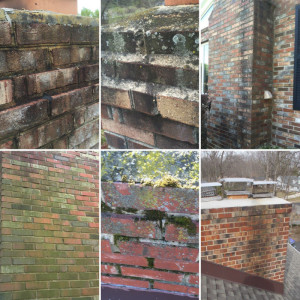


 Water penetration and damage can prematurely shorten the life of your chimney and your home costing you hundreds and thousands of dollars in repairs. That is why we believe in preventative maintenance from water intrusion for your chimney.
Water penetration and damage can prematurely shorten the life of your chimney and your home costing you hundreds and thousands of dollars in repairs. That is why we believe in preventative maintenance from water intrusion for your chimney. Your woodstove should be a valued asset each winter. It can make your home warm and cozy, and help lower your home-heating bills. An attractive, well-functioning woodstove can serve as a gathering place for your family and friends on a cold day, providing ambiance and heat.
Your woodstove should be a valued asset each winter. It can make your home warm and cozy, and help lower your home-heating bills. An attractive, well-functioning woodstove can serve as a gathering place for your family and friends on a cold day, providing ambiance and heat.
 It is that time of year again. With Winter just around the corner, homeowners everywhere are scheduling their fireplace inspections, cleanings, and more. To-do lists form fast, especially with the holiday season in sight, which is why we are reminding you to have your chimney chase cover replaced now. Call in the experts at Clean Sweep of Anne Arundel County before things get extra busy!
It is that time of year again. With Winter just around the corner, homeowners everywhere are scheduling their fireplace inspections, cleanings, and more. To-do lists form fast, especially with the holiday season in sight, which is why we are reminding you to have your chimney chase cover replaced now. Call in the experts at Clean Sweep of Anne Arundel County before things get extra busy!






